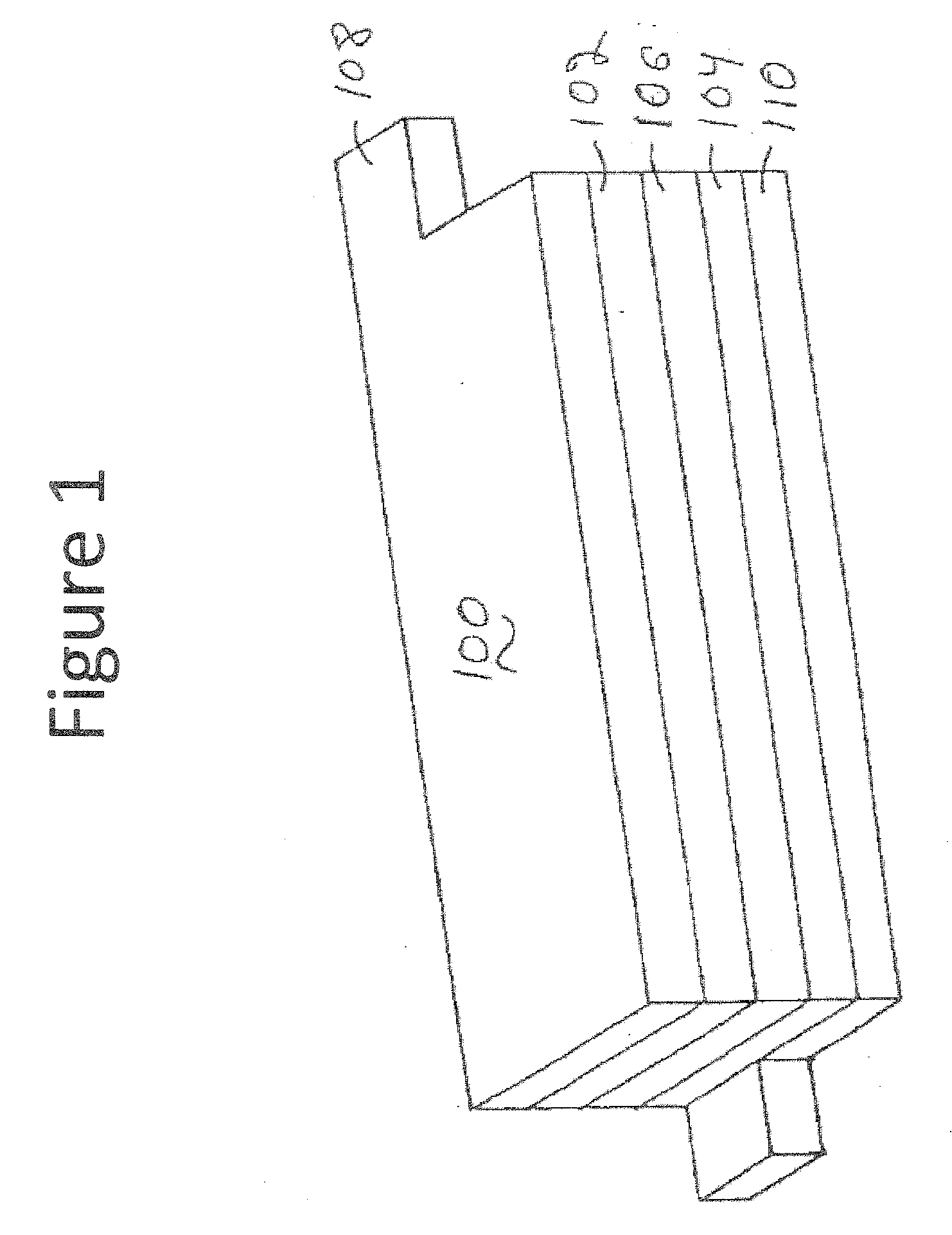High Energy Lithium Ion Secondary Batteries
a lithium ion secondary battery, high-energy technology, applied in the direction of cell components, final product manufacturing, sustainable manufacturing/processing, etc., can solve the problems of low energy density of battery cells, no significant improvement in energy density,
- Summary
- Abstract
- Description
- Claims
- Application Information
AI Technical Summary
Benefits of technology
Problems solved by technology
Method used
Image
Examples
example 1
Cathode Capacity Determined from Coin Cell Battery Measurements
[0067]This example demonstrates the high energy density that is available from a battery having a positive electrode formed with high loading of an active material. The active material has a high energy capacity as well as particle properties that provide for a high loading into the electrode.
[0068]The positive electrode was formed with cathode powders having the chemical formula Li[Li0.2Ni0.175Co0.10Mn0.525]O2.0 and a surface coating of aluminum fluoride. The material was synthesized as described in the example of the '735 application. Cathode powders were mixed with conductive carbon in a jar mill for a few hours. The resulting powder was mixed with PVDF and N-methyl pyrrolidone (NMP) solution using a magnetic stirrer to form an homogeneous slurry. The PVDF had an average molecular weight of 1 million atomic mass unit (AMU). The slurry was coated on an aluminum foil to desired thickness and then vacuum dried. The dried...
example 2
Cathode Capacity Determined from Another Coin Cell Battery Measurements
[0070]This example demonstrates the high energy capacity that is available in a coin cell battery with an anode comprising a lithium intercalation material. The coin cell has a positive electrode formed with high loading of an active cathode material.
[0071]Positive electrode was formed using cathode powders having the chemical formula Li[Li0.2Ni0.175Co0.10Mn0.525]O2.0 and a surface coating of aluminum fluoride. Cathode powders were mixed with conductive carbon in a jar mill for a few hours. The resulting powder was mixed with PVDF and N-methyl pyrrolidone (NMP) solution using a magnetic stirrer to form homogeneous slurry. The PVDF used has an average molecular weight of 1 million AMU. The slurry was coated on an aluminum foil to desired thickness and then vacuum dried. The dried coated foil was compressed to desired thickness and electrodes were punched out of the coated foil for fabricating the coin cell batteri...
example 3
Cathode Capacity Determined from Pouch Cell Battery Measurements
[0073]This example demonstrates the high energy capacity that is available in a pouch cell battery formed with high loading of an active cathode material. A pouch cell battery with dimensions 190 mm×95 mm×8 mm (volume=0.144 L)was constructed and tested following the same construction and testing approaches outlined in example 2, with adaptations to suite the pouch cell battery with a stack of electrodes separated with separators. The positive electrodes are connected in parallel, and the negative electrodes are similarly connected in parallel. FIG. 5a shows a photo of the front of the pouch cell battery. FIG. 5b shows a photo of the side of the pouch cell battery. FIG. 5c shows a discharge curve of the pouch cell battery having 23 Ah and energy density of 250 Wh / kg.
[0074]Data presented in Examples 1 and 2 above demonstrated cathode capacity of 277 mAh / g using a lithium anode and cathode capacity of 260 mAh / g using a car...
PUM
| Property | Measurement | Unit |
|---|---|---|
| weight percent | aaaaa | aaaaa |
| thickness | aaaaa | aaaaa |
| volumetric discharge energy density | aaaaa | aaaaa |
Abstract
Description
Claims
Application Information
 Login to View More
Login to View More - R&D
- Intellectual Property
- Life Sciences
- Materials
- Tech Scout
- Unparalleled Data Quality
- Higher Quality Content
- 60% Fewer Hallucinations
Browse by: Latest US Patents, China's latest patents, Technical Efficacy Thesaurus, Application Domain, Technology Topic, Popular Technical Reports.
© 2025 PatSnap. All rights reserved.Legal|Privacy policy|Modern Slavery Act Transparency Statement|Sitemap|About US| Contact US: help@patsnap.com



